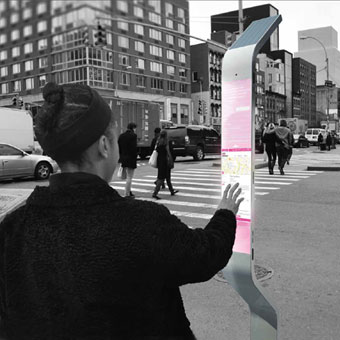Inspiring the Next Generation of STEM Enthusiasts
A friendly competition is brewing in the corner of a basement classroom in Link Hall during the annual STEM Trekkers summer program, where students are participating in a time-honored ritual: seeing who can build a paper airplane that travels the…


 New York City, which manages more than 11,000 public payphones throughout its five boroughs, devised the competition to reimagine a new phone prototype, in anticipation of the city’s service vendor contract ending in 2014. Payphone use has decreased with the use of mobile devices, but payphones still serve New Yorkers and visitors every day.
New York City, which manages more than 11,000 public payphones throughout its five boroughs, devised the competition to reimagine a new phone prototype, in anticipation of the city’s service vendor contract ending in 2014. Payphone use has decreased with the use of mobile devices, but payphones still serve New Yorkers and visitors every day.